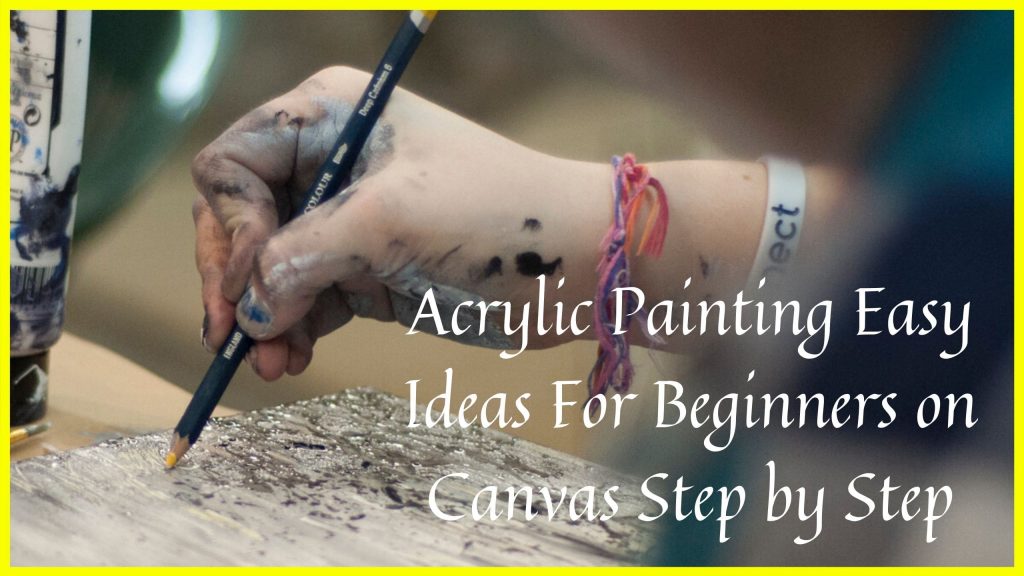Acrylic painting is famous worldwide because it dries fast, and you can use it on many things. This guide is here to help beginners with easy ideas, step-by-step tutorials, and tips for acrylic portrait painting.
Table Of Content
History of Acrylic Painting:
People started using acrylic paint in 1934, which became commercial in 1950 as Magna paints. Now, besides canvas, people use acrylics on glass and more.
Easy Ideas for New Artists:
For new artists, practice is essential. You can try on transparent acrylic sheets and use designs if drawing freehand is hard. Try different themes and sizes to get better.
Acrylic Painting Tips and Techniques:
1. When working on porous surfaces like wood, allow the paint to dry completely before repainting.
2. Regularly clean your brushes with water or acrylic paint cleaners.
3. Experiment with different acrylic paint brands to find your preference.
4. Work with small amounts of paint on your palette due to quick drying.
5. Thoroughly prepare surfaces like wood, glass, or ceramics before painting.
6. Try layering to make your acrylic paintings look more attractive. Let each layer dry before adding the next one. This works well for landscapes and portraits, making them look more authentic.
7. Use palette knives to make your paintings feel bumpy. Put on thick paint strokes with the knife to make it look 3D. This is great for making your paintings stand out.
8. To make neat and precise lines, use masking tape. Stick the tape where you want a line, paint it inside, and remove it when it is dry. This is good for designs with straight lines or patterns.
9. Try glazing to make different colors in your painting. Put thin, see-through layers of paint on top of dry layers for a rich and varied set of colors. This is great for making your paintings glow.
10. Blend colors directly on the canvas by painting wet paint on top of wet paint. This makes colors mix naturally. It’s suitable for making smooth transitions and gradients in your paintings.
11. Paint around shapes instead of filling them in directly to make them stand out. This adds depth and makes your artwork more interesting.
12. Use stippling, making small dots or dashes with paint to create texture and detail. This works well for things like leaves, skies, or detailed patterns.
13. Make your paintings shiny by adding glitter or metallic accents. Mix glitter or metallic paint with your acrylics to make certain artwork parts stand out and look fabulous.
14. Use a scraper or an old credit card to scrape away a thin layer of wet paint. This adds shiny parts to your paintings, especially for water or shiny objects.
Blending Acrylic Paint for Beginners:
To blend colors well, paint blocks of each color next to each other and use a damp brush to combine them.
Sgraffito Technique:
Sgraffito means scratching into wet paint to show layers underneath. You can use tools like screwdrivers for this.
Unique Effects with a Squeegee:
Use a regular squeegee to make cool designs. Put paint on one edge and drag it through for unique results.
Choosing the Perfect Acrylic Paint:
Think about color, thickness, and consistency when choosing paint. Be careful with cheap options; they might need better quality—research good brands.
Pros and Cons of Acrylic Painting:
Pros:
1. Fast Drying: Acrylic paints dry quickly, reducing waiting time for artists.
2. Familiar Appearance: Acrylics can resemble watercolors or oil paints when diluted.
3. Durability: Dry acrylics resist water damage and do not yellow like oil paintings.
Cons:
It dries fast so that it can look stiff.
It’s hard to change acrylic paintings once they’re dry.
Some acrylic paints might have toxins.
Conclusion:
Acrylic painting is fun because it dries fast and can be used in many ways. Use these ideas, tutorials, and tips to improve acrylic painting in 2024.
Video Tutorial for Acrylic Painting Easy Ideas For Beginners
Acrylic painting Basket of flowers on canvas In this painting demo, I show you a simple and step-by-step method to color a gorgeous basket of flowers. For this painting,
I used different reminder blues. you’ll try with the other shades you wish. Please watch the painting tutorial without skipping.
1. Aluminum foil Paintings
2. Cotton Swab Paintings
3. Cushion Foam paintings
4. Рencil paintings
5. Сharcoal paintings
6. Toothbrush Paintings
7. Spoon Art Paintings
Portraitvilla is the best platform to earn and learn for beginners artists. You can check acrylic painting prices to get an idea of how much you can charge.
Quality is not an act, it is a habit
Aristotle
Good, better, best. Never let it rest. ‘Til your good is better and your better is best.
St. Jerome

